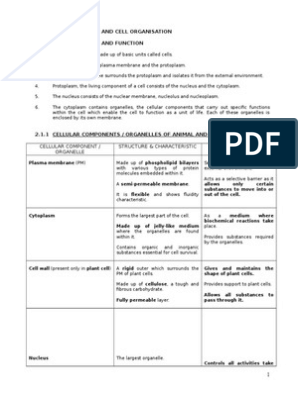Learning Guide Unit 6: Introduction | Home https://my.uopeople.edu/mod/book/view.php?
id=409221&chapterid=493007
Learning Guide Unit 6
As you have learned, biology is the study of life. So far, you have studied characteristics of life at the cellular and molecular level of
organization. In this unit, you will study beyond the cell and explore the diversity of life. Just as there are prokaryotic and eukaryotic cells, there
are prokaryotic and eukaryotic organisms.
Scientists have grouped living organisms into di�erent types of groups. Traditionally, organisms have been placed into �ve kingdoms including
prokaryotes, protists, fungi, plants, and animals. In the late 20th century, Carl Woese and other scientists classi�ed organisms into three
evolutionary lineages called domains. Domains are characterized based on sequences of small-subunit ribosomal RNA (SSU rRNA) and cell
membrane properties. The domain Bacteria comprises all organisms in the kingdom Bacteria, the domain Archaea comprises the rest of the
prokaryotes, and the domain Eukarya comprises all eukaryotes—including organisms in the kingdoms Animalia, Plantae, Fungi, and Protista.
Two of the three domains—Bacteria and Archaea—are prokaryotic. Prokaryotes were the �rst inhabitants on Earth, appearing 3.5 to 3.8 billion
years ago. These organisms are abundant and ubiquitous; that is, they are present everywhere.
Prokaryotic organisms are single-celled, small, and lack internal organelles. As such, they are quite di�erent than larger and more advanced
eukaryotic organisms. However, prokaryotic metabolism is similar to that of eukaryotic organisms. All living organisms must be able to utilize
energy. Cellular respiration is characteristic of both prokaryotes and eukaryotes.
Eukaryotic organisms are thought to have evolved from prokaryotic organisms. One theory attempting to explain the evolution of eukaryotic
life suggests internal organelles, and thus eukaryotic cells, evolved as a result of endosymbiosis. Speci�cally, larger prokaryotic cells ingested
smaller cells that survived inside the larger host cell. This theory likely explains the evolution of mitochondria and chloroplasts.
Protists are single-celled eukaryotic organisms. Several groups of protists exist today and include both plant-like (plastids) and animal-like
(protozoa) organisms.
Multicellular eukaryotes include fungi, plants, and animals. Plants are autotrophic organisms as they synthesize organic molecules from
inorganic sources – photosynthesis. Additionally, plant cells are distinct in that they contain water vacuoles and cell walls. Animals are
heterotrophic as they can synthesize organic molecules from other organic sources. Animal cells lack water vacuoles and cell walls. Fungi are
similar to plants in that they contain cell walls and absorb nutrients from the environment, and similar to animals in that they are
heterotrophic.
Plants can be categorized into several groups including non-vascular and vascular plants. Bryophytes are non-vascular and thus must be �at
covering large surface areas. The evolution of vasculature (xylem and phloem) allowed plants to grow away from the surface. Seeds, pollen,
and �owers are other adaptations of plants contributing to diversity. All plants undergo an alternation of generations in their life cycle. The
gametophyte generation is haploid and undergoes mitosis for the production of gametes. Gametes undergo fertilization giving rise to a zygote
which gives rise to the diploid sporophyte generation. The sporophyte undergoes meiosis for the production of haploid spores which give rise
to the sporophyte plant. In more primitive plants; e.g., bryophytes, the gametophyte generation is more dominant. The sporophyte generation
becomes more prominent in more advanced plants. For example, a �ower is a sporophyte organism.
Animals can be categorized into di�erent groups including invertebrates and vertebrates. Even though members of the animal kingdom are
incredibly diverse, most animals share common characteristics. All animals are eukaryotic, multicellular organisms, and almost all animals
have a complex tissue structure with di�erentiated and specialized tissues. Most animals are motile, at least during certain life stages. All
animals require a source of food and are therefore heterotrophic, ingesting other living or dead organisms; this feature distinguishes them
from autotrophic organisms, such as most plants, which synthesize their own nutrients through photosynthesis. Most animals reproduce
sexually in which gametes (egg and sperm) are the only haploid cells. Fertilization restores the diploid organism and the o�spring pass through
a series of developmental stages (embryonic development) that establish a determined and �xed body plan.
Biology from Openstax College (2013) from Rice University retrieved from http://cnx.org/contents/185cbf87-c72e-48f5-b51e-
f14f21b5eabd@9.85:1
1 of 2 5/17/2024, 8:47 AM
�Learning Guide Unit 6: Introduction | Home https://my.uopeople.edu/mod/book/view.php?id=409221&chapterid=493007
2 of 2 5/17/2024, 8:47 AM






































































































